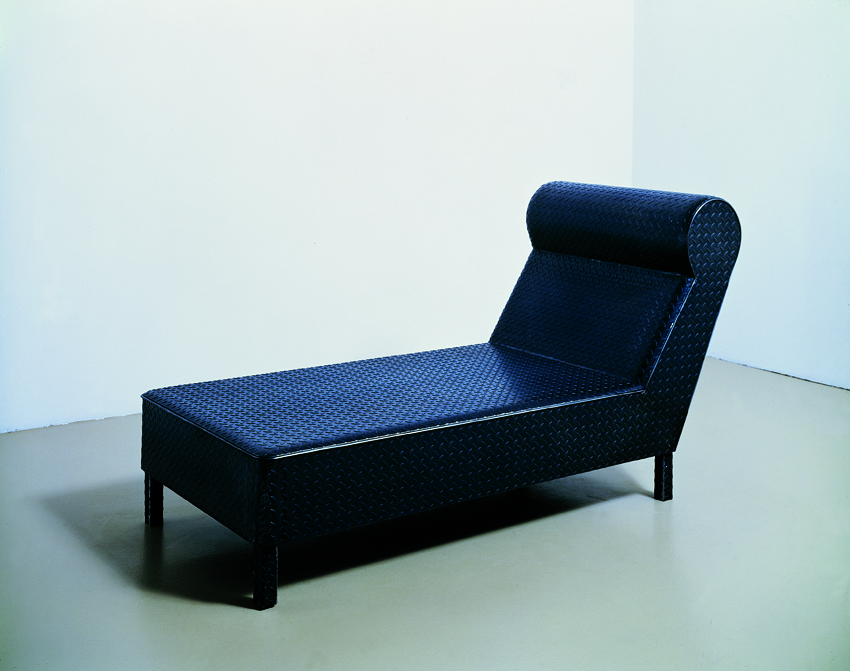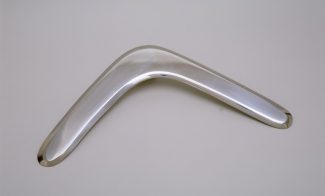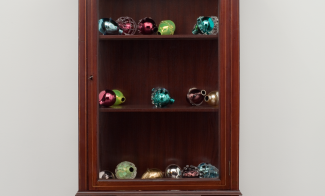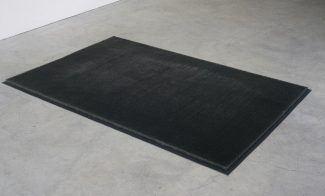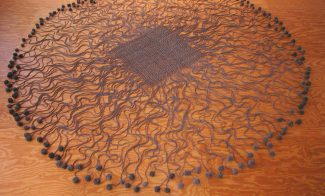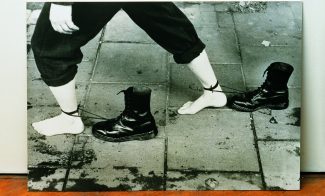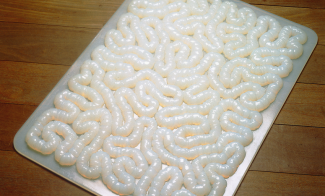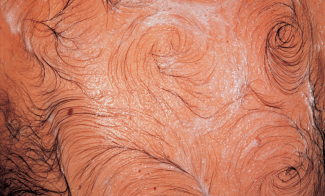In performances, sculptures, installations, and photographs, Mona Hatoum (Born 1952 in Beirut) investigates the layered issues of cultural and physical displacement, gender and ethnic identity, and the physical and social body. She is perhaps best known for her sculptures of ordinary yet emotionally charged domestic objects—kitchen implements, cribs, welcome mats. Blown up to gigantic proportions or made with unexpected materials such as rubber, steel, or pins, her sculptures evoke a shifting sense of danger and familiarity, as they are both physically enticing and a bit sinister.
This dynamic is at play in Dormeuse, a chaise longue made with steel tread plate. The chaise has been a key prop throughout art history, appearing in many well-known paintings—notably Jacques-Louis David’s Portrait de Mme Récamier (1800)—as a symbol of feminine leisure, relaxation, and economic privilege. Hatoum removes these associations from her sculpture, as well as the recumbent figure. While viewers cannot “complete” the work by lounging on it, it is apparent that it is not a place of rest and comfort. Its unforgiving surface paints a cold, hard portrait of domesticity. Hatoum transforms the chaise into the kind of sturdy utilitarian fixture that could be found in a subway station. The sculpture is archetypal Mona Hatoum, as it elegantly and subtly unravels the stereotype of the home as a refuge.
